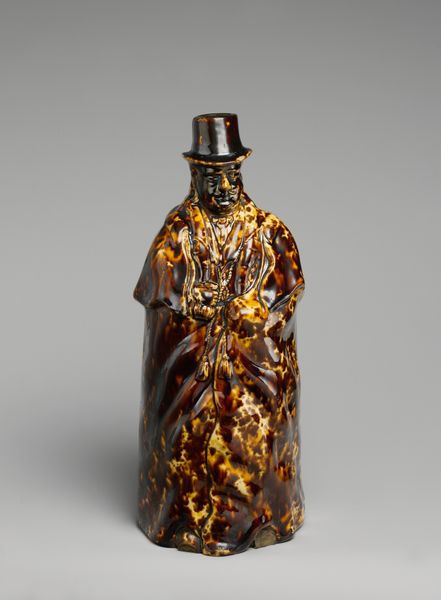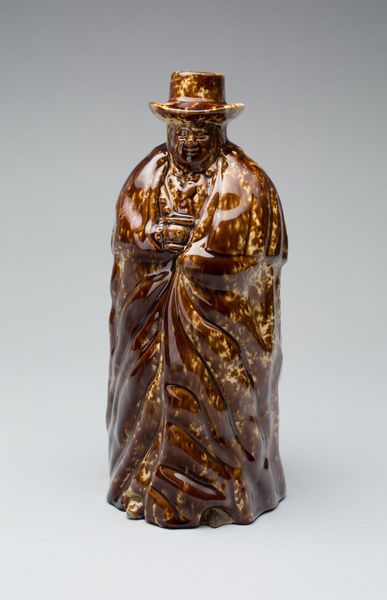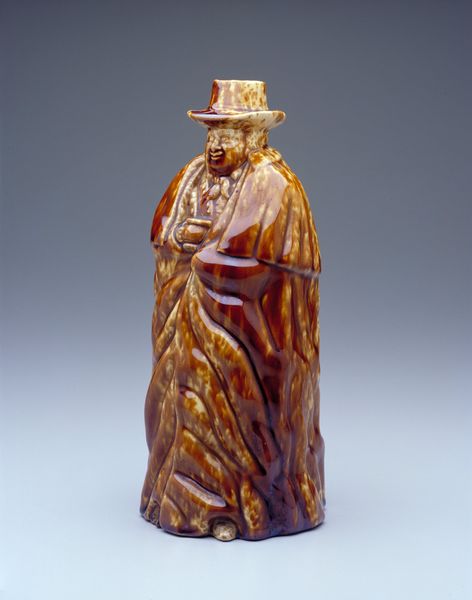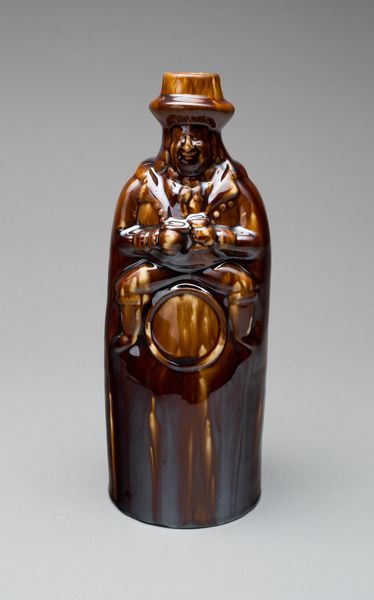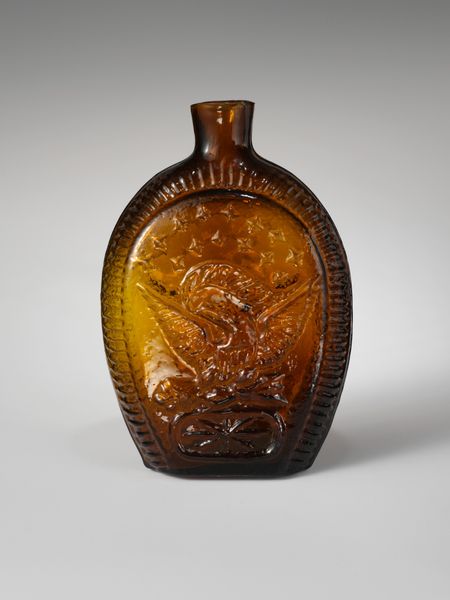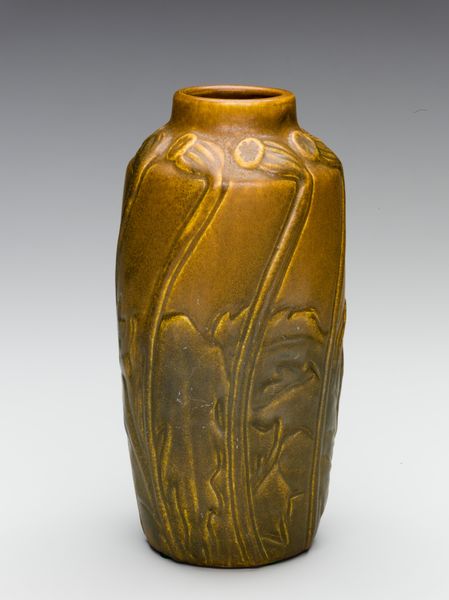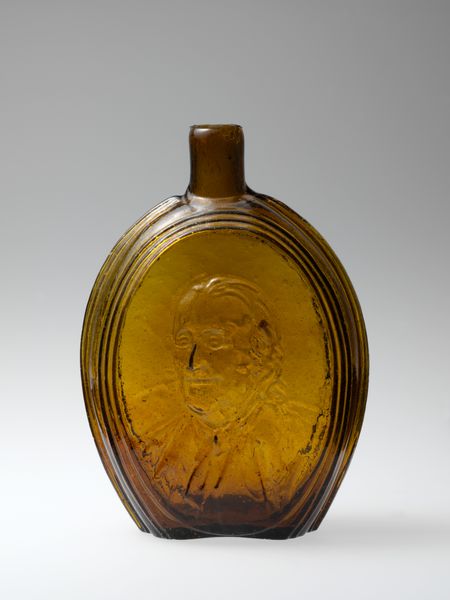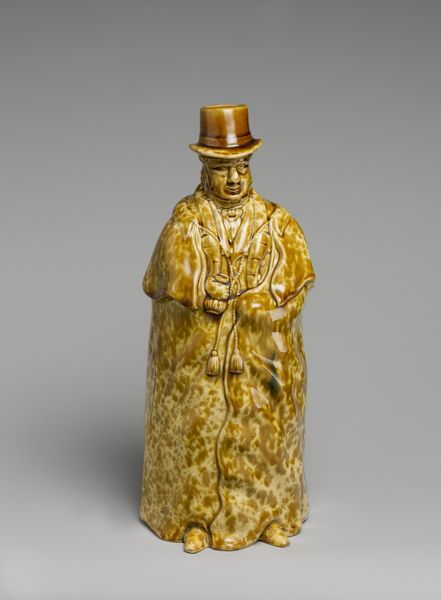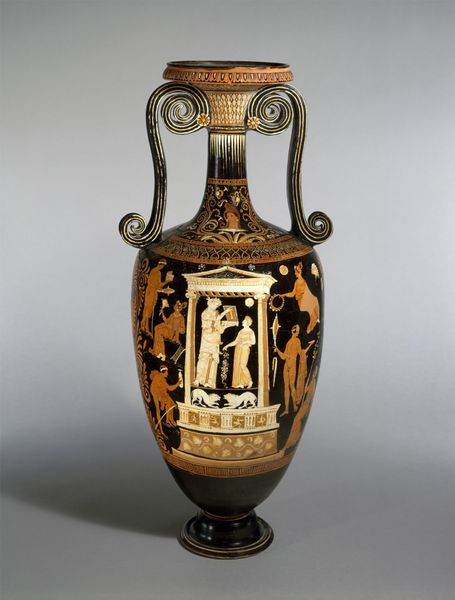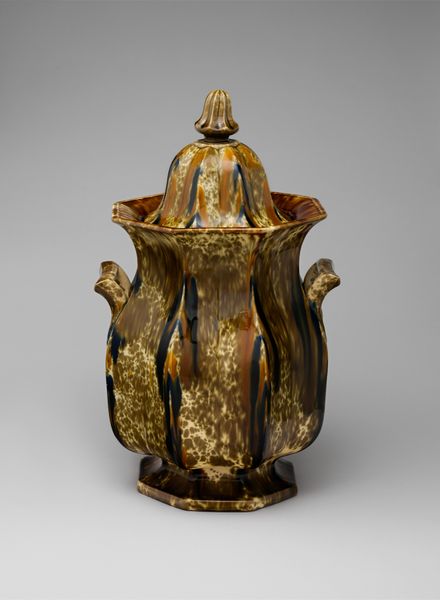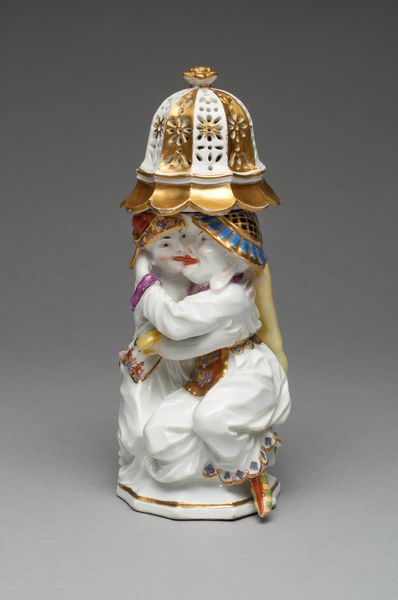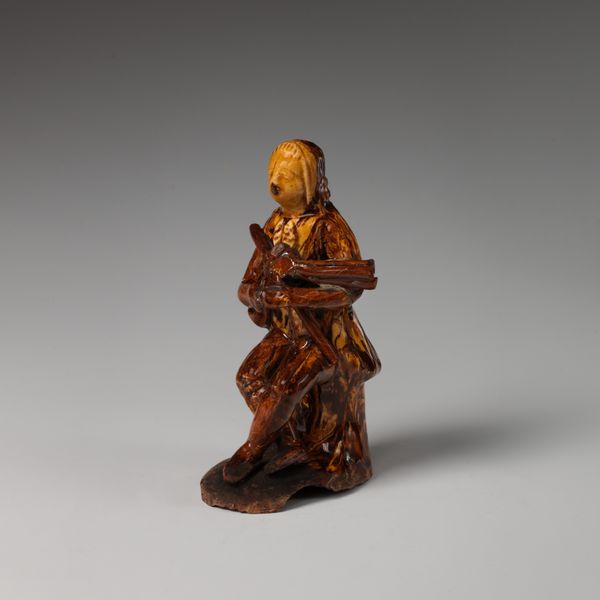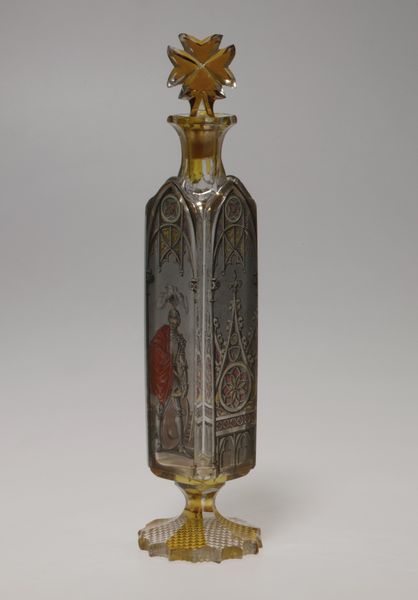
ceramic, sculpture
#
portrait
#
ceramic
#
figuration
#
stoneware
#
sculpture
#
ceramic
Dimensions: H. 10 3/4 in. (27.3 cm)
Copyright: Public Domain
Editor: So, this stoneware bottle from between 1849 and 1858, made by Daniel Greatbatch, is currently housed at the Metropolitan Museum of Art. I’m immediately struck by how its texture mimics drapery – but drapes on… a bottle. What cultural stories might be hiding in its shape and surface? Curator: That drapery effect you mention isn’t accidental. Think about the act of disguising—of pouring something forbidden perhaps. Is this clergyman offering communion, or something more profane? The glossy brown glaze could symbolize earthiness, while the caricature invites ridicule. Editor: So, the figure itself, being a clergyman in a bottle, could suggest some form of… mockery of the clergy, perhaps fueled by temperance movements? Curator: Precisely. These novelty items often spoke volumes about societal tensions. The hat, the tight grip on the object, even the slightly comical features… consider how each element contributes to a broader narrative about respectability, and perhaps, hidden vices. Where might such items typically be displayed, in your opinion? Editor: Well, I imagine these would be conversation pieces in homes, perhaps displayed prominently as both decor and social commentary. So it’s less about religious experience and more about cultural dialogue… Curator: Indeed. It’s the everyday placement that amplified its voice. A constant reminder, sparking discourse around personal morality, public image, and institutional authority. How does this change your initial feeling about the work? Editor: It’s become much less a strange ceramic and more a relic of pointed social commentary. That certainly gives it a more captivating power. Curator: And reminds us how seemingly simple objects are repositories of history and encoded cultural beliefs.
Comments
No comments
Be the first to comment and join the conversation on the ultimate creative platform.
